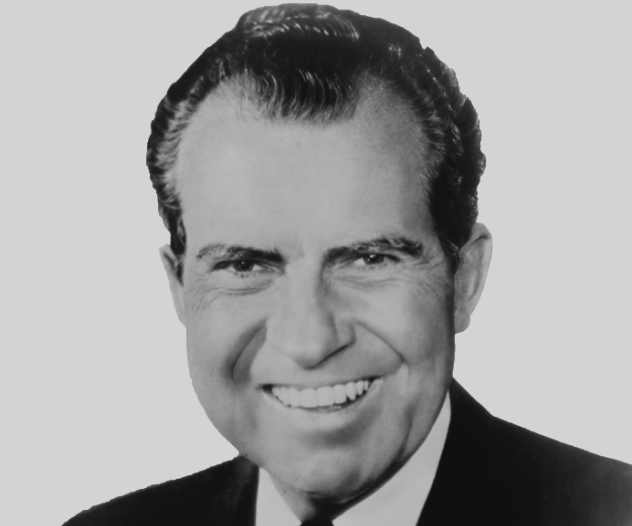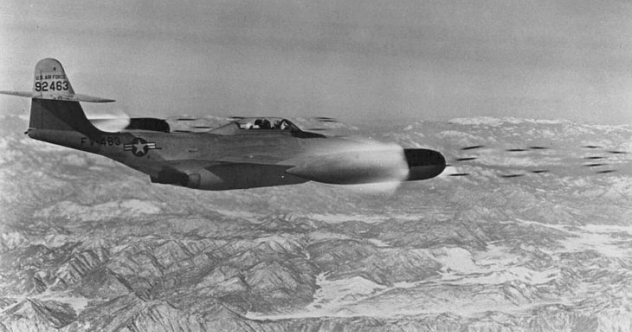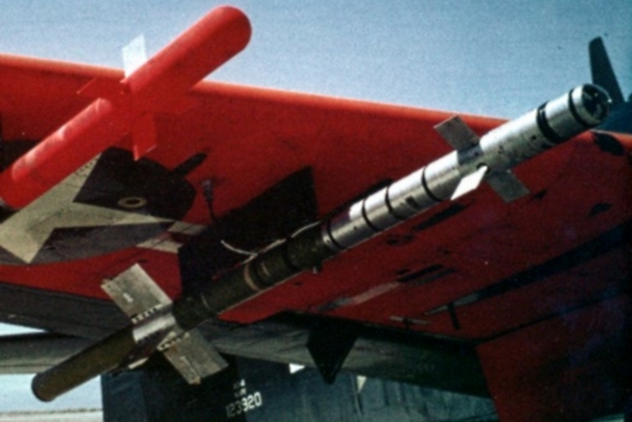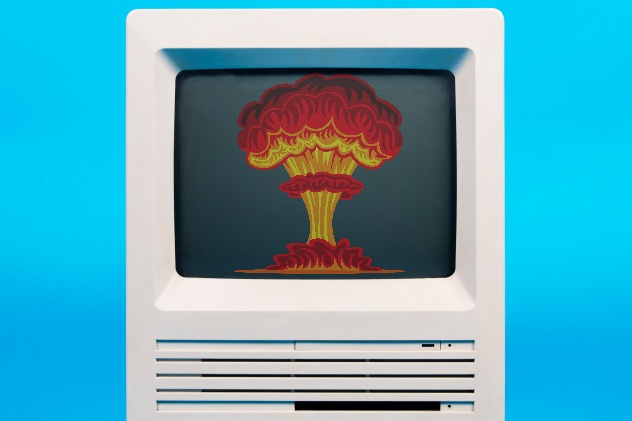 Politics
Politics  Politics
Politics  Weird Stuff
Weird Stuff 10 Freaky Times When Famous Body Parts Were Stolen
 Miscellaneous
Miscellaneous 10 Interesting Things Manufacturers Stopped Making and Why
 Gaming
Gaming 10 Funny Tutorials in Games
 History
History 10 Fascinating Little-Known Events in Mexican History
 Facts
Facts 10 Things You May Not Know about the Statue of Liberty
 Movies and TV
Movies and TV 10 Movie Adaptions That Brought Popular Songs to Life
 Health
Health 10 Miraculous Advances Toward Curing Incurable Diseases
 Miscellaneous
Miscellaneous 10 Undeniable Signs That People’s Views of Mushrooms Are Changing
 Animals
Animals 10 Strange Attempts to Smuggle Animals
 Politics
Politics 10 Countries Where Religion and Politics Are Inseparable
 Weird Stuff
Weird Stuff 10 Freaky Times When Famous Body Parts Were Stolen
 Miscellaneous
Miscellaneous 10 Interesting Things Manufacturers Stopped Making and Why
Who's Behind Listverse?

Jamie Frater
Head Editor
Jamie founded Listverse due to an insatiable desire to share fascinating, obscure, and bizarre facts. He has been a guest speaker on numerous national radio and television stations and is a five time published author.
More About Us Gaming
Gaming 10 Funny Tutorials in Games
 History
History 10 Fascinating Little-Known Events in Mexican History
 Facts
Facts 10 Things You May Not Know about the Statue of Liberty
 Movies and TV
Movies and TV 10 Movie Adaptions That Brought Popular Songs to Life
 Health
Health 10 Miraculous Advances Toward Curing Incurable Diseases
 Miscellaneous
Miscellaneous 10 Undeniable Signs That People’s Views of Mushrooms Are Changing
 Animals
Animals 10 Strange Attempts to Smuggle Animals
10 Strange Cold War Tales Left Out Of The History Books
We’ve previously talked about bizarre things that happened during the Cold War, and there are many more such stories. Four decades truly is more than enough time for all sorts of wackiness.
10 Nixon’s Pretend Attack On The Soviets

In October 1969, nuclear-armed bombers took off from the US and raced over the North Pole. The move looked very much like a preemptive strike against the communists. It wasn’t; it was just part of Richard Nixon’s crazy plan to make the Soviet Union think he was crazy. Nixon’s thinking was that if the Soviets thought he was crazy, they would tell the North Vietnamese to back off in Vietnam out of fear he would do something rash. Alternately, Nixon might have wanted to deter the Soviets from bombing China’s nuclear weapons facilities, as the Soviets and Chinese were rather unfriendly toward each other at this stage of the Cold War.
The operation was so secret that top US military officials were kept out of the loop, even the chairman of the joint chiefs of staff. The operation also coincided with US nuclear forces secretly going on alert, again without telling top US generals. In the end, if its goal was to get the Soviets to respond in some way, the operation seems to have failed. The US detected no changes in Soviet activities.
9 The US Built A Top Secret Bunker For Congress Inside A Luxury Hotel
West Virginia’s Greenbrier Resort is famous as a haunt of kings, prime ministers, and presidents. But for 30 years during the Cold War, it was also home to a gigantic fallout shelter the size of a Walmart, designed to house all of Congress during nuclear war. Construction of the fallout shelter started in 1958. The workers who dug the big hole in the ground and poured tens of thousands of tons of concrete into it were told that they were building a new conference facility. This was technically true, as part of the complex was occasionally used as such; thousands of people would walk in and out of the bunker without ever knowing they had been in a top secret fallout shelter for the US Congress.
For years, there were rumors about the area, and most of the people in the nearby town of White Sulphur Springs knew something was amiss. A 2,000-meter (7,000 ft) runway was built along with the bunker to secretly allow speedy transportation from Washington, which raised questions as to why it was needed in a town of just a few thousand people. There was also the mysterious group of workers who worked at the hotel but not for the hotel. They were there to secretly keep the bunker in tip-top shape.
The bunker was ultimately exposed by The Washington Post in 1992. Its secrecy blown, the facility was deactivated.
8 The Battle Of Palmdale

On August 20, 1956, the US Navy was testing an automated drone designed for use in tests of air-to-air missiles. The drone was supposed to crash in the Pacific Ocean but instead malfunctioned and started heading for Los Angeles. The Navy, understandably panicked about the drone heading toward a major city, sent two fighter aircraft to shoot it down. That should have been a simple mission, right?
As it turned out, the fighters were ill-equipped to shoot down the drone. Even after firing 208 unguided air-to-air rockets at the drone, the fighters failed to do anything but set fire to Los Angeles County below them, with rockets landing in people’s backyards and blazes burning very close to a munitions factory. The fires burned 1,000 acres. The drone finally crashed when it ran out of fuel, thankfully coming down in an empty stretch of desert.
7 The Soviets Built A Laser Tank
In the 1970s and 1980s, during the height of the Cold War, the Soviet Union sought a counter to the high-tech sensors that NATO was then fielding. The solution? Laser weapons, culminating in a full-size tank armed with a gigantic laser which could burn out enemy optical sensors in less than a second and range farther than a conventional tank gun.
There were a number of prototypes, including the 1K11, the first prototype, which was produced in 1982. There were various other prototypes, but the ultimate design was the 1K17 “Szhatie,” which was based on the chassis of a T-80 main battle tank. The laser on the 1K17 had 12 separate channels for laser beams, which increased the power of the weapon, and large batteries that allowed for a rapid rate of fire.
The weapon proved, however, to have several downsides. For such a high-tech vehicle, the crew could only aim the laser by sticking their heads out of the turret, leaving them vulnerable to gunfire. Each of the 12 laser channels also required a 30-kilogram (66 lb) ruby, which was very expensive. Finally, dust or other particles in the air would limit the range of the laser. When the Soviet Union collapsed and money became tight, the program was canceled.
6 The CIA Fought Soviet Influence With Abstract Art

It sounds like a ridiculous question: Could abstract art be a useful weapon against the Soviet Union during the Cold War? The CIA certainly thought so because they funded abstract artists for more than two decades. The CIA believed that this new art movement, which had been reviled by most of the US, would be an example of free thought and innovation, in opposition to Soviet conformity and rigidity. The funding may also have been due to the fact that when the CIA was founded in 1947, it was composed mainly of Ivy League graduates, who were quite liberal for the time compared to the more conservative US political scene.
A network of philanthropic foundations funded by secret CIA bank accounts sponsored abstract expressionist art around the world. These, along with discreet CIA requests to wealthy philanthropists, meant that the CIA’s reach into the international world of art was both long and deep. Many of the artistic exhibitions and events of the 1950s were only possible because the CIA had secretly stepped in with cash.
5 The US Accidentally Gave The Soviets A Complete Air-To-Air Missile

The US once accidentally gave a state-of-the-art air-to-air missile to the Soviets. Or more accurately, they gave it to the Chinese, who then accidentally gave it to the Soviets.
The Sidewinder missile was the first US air-to-air missile ever developed. Designed by the US Navy for use by carrier jets, the missile quickly caught on with the rest of the US armed forces and was adopted by the air force for its aircraft. The missile first saw combat not with the US Air Force, but with the Republic of China’s air force against Chinese communists during the Second Taiwan Strait Crisis. The US supplied the missile, which was promptly used to trounce the communists, who had only cannon-armed fighter aircraft.
Unfortunately for the US, one of the missiles was fired at a communist Chinese Mig-17 and lodged in the jet’s fuselage, failing to explode. The communists gave the missile to the Soviets, who gave it to their engineers. Unfortunately, the technology used in the Sidewinder gave the Soviets a number of great hints on how to design air-to-air missiles, and they would eventually produce an improved copy of the Sidewinder, the AA-2 Atoll, which would go on to widespread service among the Soviets and their allies, giving the US headaches in Vietnam.
4 US Agents Combed Alaskan Beaches For Soviet Technology

The US used several methods to spy on the Soviets, but one of the most bizarre ways was simply to comb Alaskan beaches looking for Soviet technology. The rationale was that ocean currents and the wind would bring flotsam from Eastern Siberia, some of which would wash up on the shores of Alaska, the closest beaches that the US had to the Soviet Union.
One of several Air Intelligence Services Squadrons (AISSs) formed by the US Air Force, the 5504th AISS came into being in 1951. The intelligence unit operated nearly exclusively in Alaska, and most of their time was spent on Operation Beachcomber, which is exactly what it sounds like. The unit also did more conventional intelligence work like intercepting Soviet radio signals, but most of the time, they were down on the beach scavenging for junk. The unit did good work, managing to recover 115 pieces of Soviet junk during the summer of 1953.
3 A Soviet Satellite Crashed In Wisconsin

Korabl-Sputnik 1, or Sputnik 4 as it was known in the West, was the first in a series of experimental spacecraft designed to carry a man into space. It carried a test dummy with prerecorded voice messages. Launched in May 1960, the spacecraft carried out its mission flawlessly, until it was time to reenter the atmosphere. A misorientation caused the spacecraft to boost itself to a higher orbit instead of reentering, and it became stuck in space.
Two years later, the spacecraft finally reentered Earth’s atmosphere and crashed in Wisconsin. A big, 10-kilogram (20 lb) piece of metal which had embedded itself in the middle of a road was picked up by two police officers, and other pieces of debris rained down on a church in the town of Manitowoc.
The pieces were sent off to a lab to be analyzed. It was determined that they were indeed from space, having the same radiation signatures as meteorites and spacecraft exposed to space for long periods of time. An attempt to return the debris to the Soviets was politely refused.
2 The Soviets Built A Doomsday-Predicting Computer Program

After Ronald Reagan became president of the United States in 1980, the Soviet Union, wary of both him and of increasing deterioration in US-Soviet relations, decided to rationalize their response by creating a computer program that would receive inputs and give an estimate of the probability of nuclear war breaking out. The program’s output was worrying. It indicated that the Soviets were losing the Cold War. It also told the Soviets that the US was highly likely to launch a preemptive nuclear strike against them.
A fundamental assumption inherent in the computer program, called RYAN, was that if the US became much stronger than the Soviets, they would attack. As more Soviet intelligence resources were harnessed to update the computer program with more data points, the news it churned out became worse and worse. It didn’t help that at the same time, Reagan was giving the US military permission to screw with the Soviets by conducting provocative military exercises. All of this was duly fed into RYAN, and it made the situation even worse.
Soviet paranoia reached a crescendo in 1983, when NATO conducted a series of war games (Able Archer 83) just as the Soviet leader, Yuri Andropov, fell very ill. The Soviets, paranoid that the US would see this as a ripe time for a nuclear first strike, nearly struck first themselves, but when Able Archer ended, the Soviets gradually relaxed. Reagan, having gotten wind of the Soviet paranoia, also started tacking toward a more conciliatory tone, and the stage was set for something of a thaw in Soviet-US relations.
1 The US And The USSR Almost Went To The Moon Together

While President Kennedy had made an announcement in 1961 that the US would land a man on the Moon before the end of the 1960s, things were different in 1963, and relations between the Soviets and the US were on an upswing. On the other hand, support for Kennedy’s ambitious goal was fading, and the billions of dollars needed for the venture would be politically difficult to come by. In the midst of this, Kennedy gave a speech at the UN proposing that the US and Soviets go to the Moon together. The public response of the Soviets was cautiously noncommittal.
The proposal was secretly considered and rejected by Soviet Premier Nikita Khrushchev, but a few weeks later, he began to have second thoughts. Khrushchev started to believe that a joint US-Soviet moon mission would be technologically beneficial for the Soviets, who would gain access to US technology. A speculative Kennedy visit to the Soviet Union in 1964 could have sealed the deal.
Of course, this plan was not to be. Just weeks after Khrushchev decided to accept the proposal, Kennedy was assassinated. Khrushchev didn’t trust Kennedy’s successor, and the plan was dropped—a gigantic Cold War what-if that could have changed history.
Just a broke college student struggling to get by!








